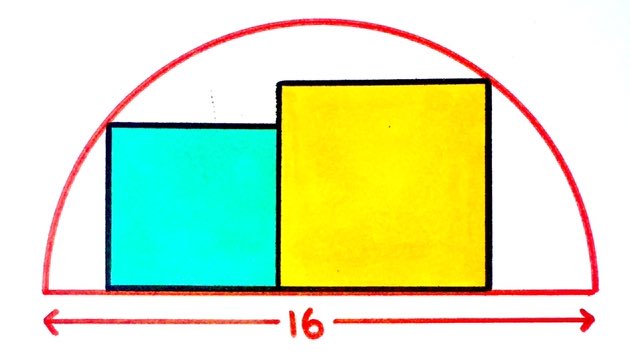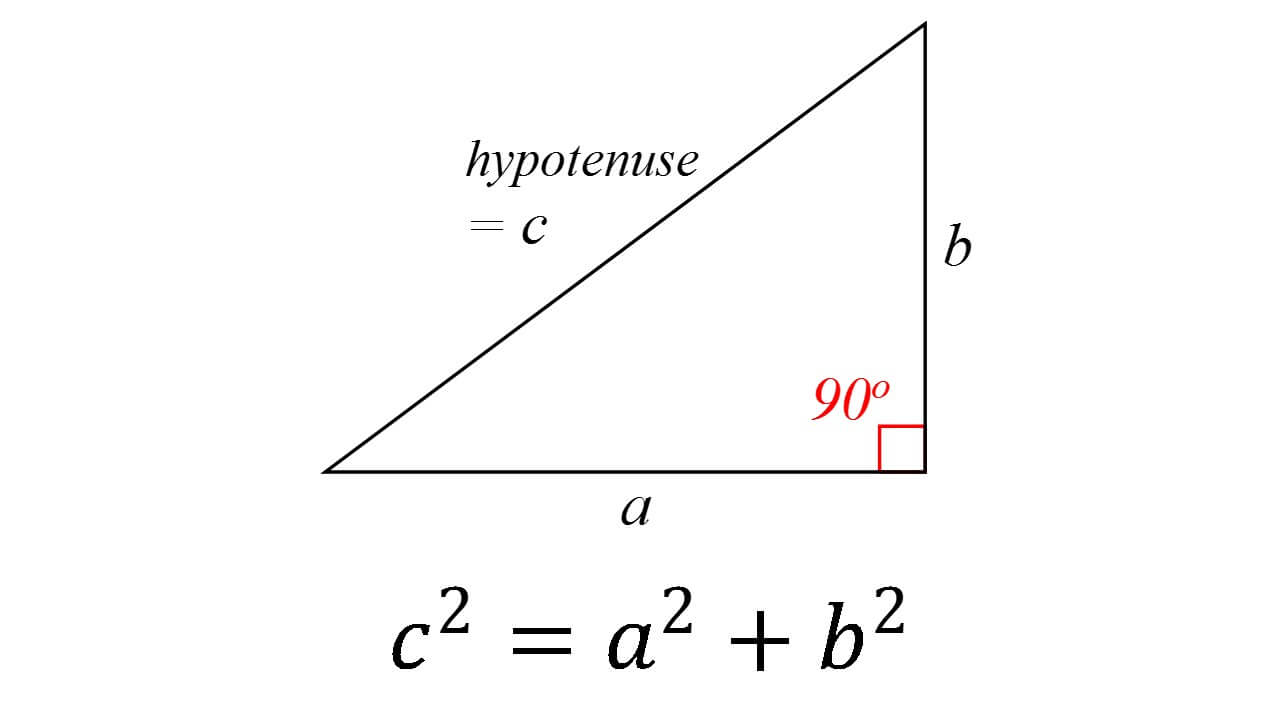From the center of the half-circle to the outer rim is the radius. Which is 16 (the diameter) / 2 = 8.
Treat the whole thing as a polar coordinate system.
x^2 + y^2 = r^2
[8cos(theta)]^ + [8sin(theta)]^= 8^2
64*(cos(theta)^2 + sin(theta)^2) = 64
64*1 = 64
64 = 64
One side of the square then has to be sqrt(32)
sqrt(32) = sqrt(2)*sqrt(16) = 4*sqrt(2)
Area of one square = w*h = 4*sqrt(2)*4*sqrt(2) = 16*2 = 32
Both squares have the same area so: 32 + 32 = 64
This is what you call easy, breh??

I’ll share the logic I used since it’s completely different, but would’ve been what I used if I saw this on a test. First thing I noticed is that you didn’t give the dimensions of either square. This suggested to me that their dimensions didn’t matter. As long as you have two squares that
touch the semicircle at one of their points and
the base of the semicircle with one of their sides and
one of their sides lined up with one of the sides of the other square then
the total area of both squares would always be the same. So then I figured what would happen if I made the larger one smaller and the smaller one larger and still met the conditions laid out above....it would tend towards a rectangle...a rectangle that is half of the largest square that would fit in a full circle of the same diameter. The largest square that would fit in such a circle would have a diagonal equal to the diameter of the circle, 16. Using
Pythagoras' theorem:
I know that c = 16 and a = b (since it’s a square), thus
c^2 = a^2 + a^2
Or
c^2 = 2*a^2
thus
16^2=2*a^2
256=2*a^2
128=a^2
note that a^2=128 is also the area of this largest square that could fit in the full circle with a diameter of 16. But we want half of that to know what the area of the rectangle sitting in the semicircle is so that’s 128/2=64.
Wanted to share that cuz sometimes even if you don’t know the trig, knowing how to interpret what the question is and
is not telling you can often help you find the answer using the math you do know. Using this principle really helped me excel in school. Saw many others struggle and give up in such situations.
I did have a question about your solution. Your closing line says...
Both squares have the same area so: 32 + 32 = 64
...but both squares do not have the same area; unless the drawing is inaccurate. Can you expound?









